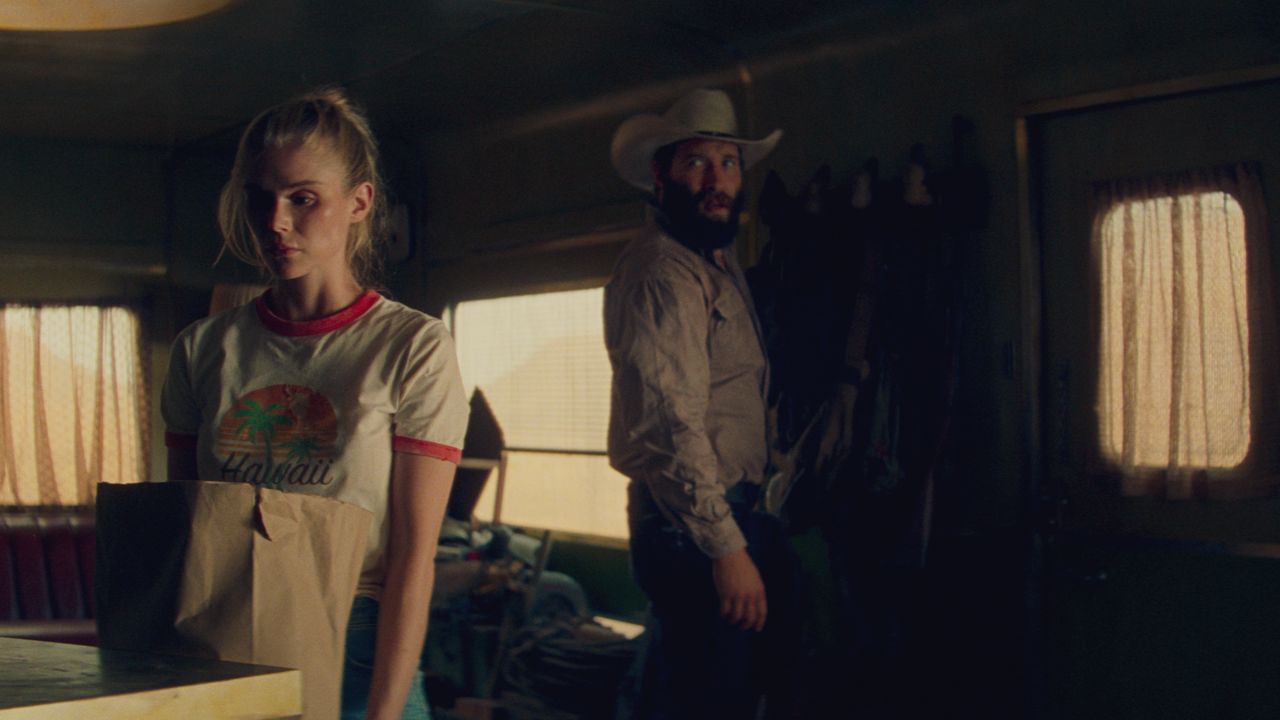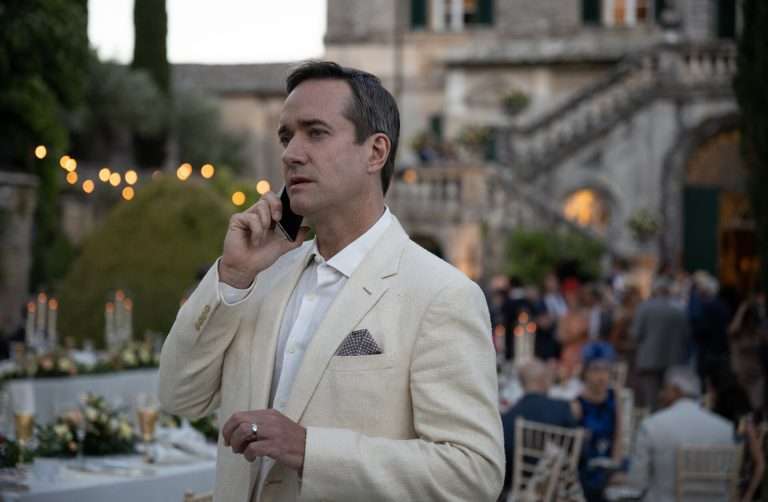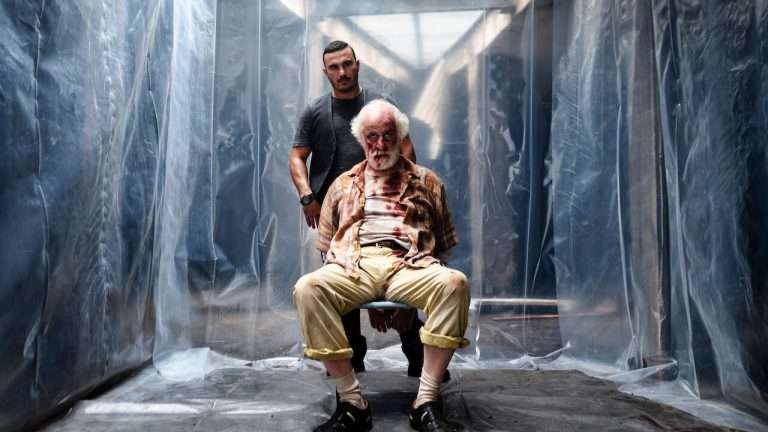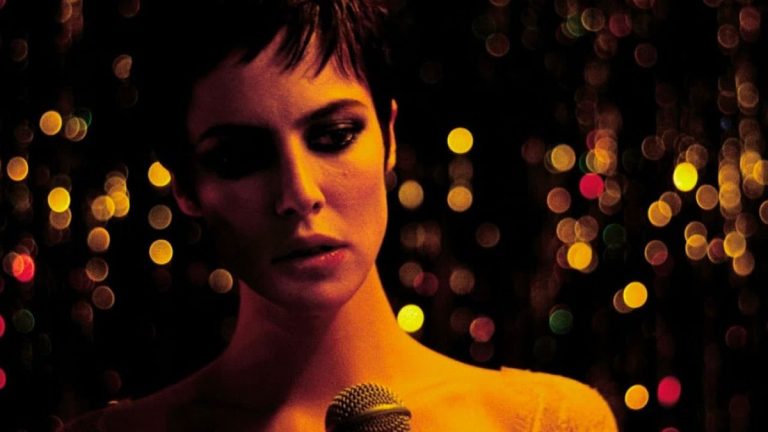Stuart Gatt’s directorial debut, “Catching Dust,” is a well-crafted thriller but is more of a character study in its essence. Hailing from a British background, Gatt bases his film on a more apt sociopolitical space of Texas or, rather, the deserts of Texas. It’s not a film where the story drives the characters; it’s the characters who move the narrative forward with their crucial decisions. Each subplot creates a situation rife with tension. Moreover, the film’s background score is used sensibly to heighten each and every aspect of the conflicts that mar the four central characters. Jai Courtney, cast to perfection as Clyde embodies the toxic tough guy role.
Gatt’s observation of a harmful, manipulative man is spot on. He throws the paintings drawn by his wife, Geena, played by a brilliant Erin Moriarty, down the garbage. When Geena screams that she needs something to survive in this absolute, vast nothingness, she finds a box of paints purchased by him so that she can paint her masterpiece. He deliberately makes sure she enjoys no connection to the outside world. It’s equivalent to someone locking up their wife in a house and allowing any form of contact only through him.
So when society comes to his doorstep in the form of Amaya (Dina Shihabi) and Andy (Ryan Corr), Clyde’s entire existence as the sole patriarch of the realm is threatened. He immediately sees them as a threat and treats them as such. His hold on Geena wavers as she finally starts to enjoy the company of people. A scene where Geena sprays water on Andy and Amaya and the resulting giggles bring out her childlike innocence. His position as a decision-maker is also under threat when Amaya introduces pastries from New York, and Geena enjoys a mouthful before Clyde decides to leave because she doesn’t eat the dessert made for her by him.
Writer-director Stuart Gatt’s understanding of the toxic masculinity is profound. He even makes Clyde poison their drinks on the pretext that he hasn’t been hospitable. Even though Gatt creates a monster, he tries to give the monster a semblance of skewed morality. When Clyde learns that Amaya has lost a child and that he is about to poison someone going through such a traumatic experience, Clyde deliberately reverts to his old self. He knocks the drinks from their hands, thereby taking the blame on himself that he is a monster, which is his excuse to behave in such a manner.

These games of morality are rife in the entirety of the film. It’s difficult to analyze whether Clyde is protective of the space they reside in or if the presence of Amaya profoundly threatens him. When Amaya talks to him regarding the shared space of the plants, he goes out of his way to thwart her advances and brings in the point of them being native to this space while Amaya and her husband are tourists, and she should not be allowed to work on her garden. He even burns her plants down when she forcibly goes and plants them.
Gatt also takes the opportunity to create the character of Andy in a much different avatar, but the mold remains the same. He is a misogynist, but he involves himself with that of the fine arts. Andy teaches abstract expressionism and talks about Rothko while wooing Geena off her feet as she is bowled over by the sensitive man against the brute force of her husband. She tries to seduce him, and he reciprocates. His toxic trait is hiding everything, figuratively and literally; he even hides Amaya’s phone in his shoes. He doesn’t want to go back home, and once the revelation is fulfilled, it becomes plain as day how the two characters are built from the same mold.
Geena has been beaten and mentally abused for so long that she gets bowled over each time her husband does something nice for her, forgetting what had happened that led him to behave so nicely in the first place. Her fear of her surroundings is well explored by Gatt through the use of the background score. There are many loud bangs that jolt the audience. It feels ingenious since the picturesque scenes of the desert have lulled the audience, and in a vast space where there is no action, we don’t expect any sound, but each and every sound has been crafted par excellence since it does the job. These bangs are also in coherence with how Geena is always on edge. She is more reactive to loud noises, which would signal that her husband is nearby and would again be on her guard.
This mixture of cinematic elements to portray fight and flight drives Geena’s character forward. Struck by Stockholm Syndrome, her fear withholds more than her yearning to leave Clyde. She is seduced by the soft-spoken New York art instructor, which elevates the drama to its final flourish. Amaya’s character is again an antithesis to that of Geena, even though she also suffers from her husband’s abuse. Amaya also provides the fearlessness that is required to deal with a brute like Clyde. She tries to instill the same in Geena and even manages to get her down to the police station to file a complaint against him.
The desert plays the quiet fifth character in this drama. Gatt’s characters are so universal in nature that he may set them in any part of the world, and the truth about them will always remain the same. The setting of a desert in “Catching Dust” is symbolic. The desert is quiet and desolate, as captured by the 35mm film in extremely wide shots. But at the same time, the desert feels like a microcosm of our society on the whole, where abuse is rampant, and yet we stay quiet. All four characters in “Catching Dust” are formal representations of how the structure of abuse remains the same throughout all strata of society.



![House By The Lake [2017] : A Lovecraftian Take On Broken Relationships](https://79468c92.delivery.rocketcdn.me/wp-content/uploads/2017/12/Fish-Man-and-Amiah-Walking-Into-Water-5-768x432.jpg)




